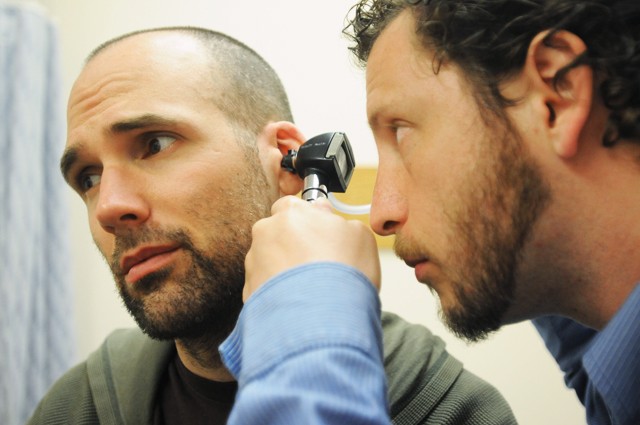Speaking to patients through a translator took a lot of getting used to for University of Minnesota nurse practitioner student Abby Bathke. “It took a little bit to realize you have to ask questions differently,” she said. “If you don’t get back what you’re looking for, you have to ask it in a different way.” A year and a half later, Bathke has just finished her stint at the Community-University Health Care Center, where services are offered in seven languages, and people of color, refugees and immigrants make up about 75 percent of patients. In the past eight months, more than 200 students and residents in medicine, pharmacy, nursing, dentistry, public health, social work, psychiatry and business rotated through CUHCC. But given Gov. Tim Pawlenty’s proposed cuts to its main revenue source, the future of education at CUHCC — and the future of the clinic itself — is uncertain. Medical Education and Research Costs, a state-funded program that pays hospitals, clinics and other health care providers to train students and residents, is facing an 83 percent reduction in funding next year totaling $55 million. At the University, this would mean a 33 percent cut in clinical training programs, or more than $1.7 million. It would also mean 50 to 60 fewer residency slots at the University of Minnesota Medical Center, Fairview, which would receive $5.4 million less than in previous years. “I don’t think that it’s just a vague threat that that clinic would be greatly endangered,” Medical School Executive Vice Dean Mark Paller said. “We might have to sell it or close it, whatever those options would be.” Under the proposed cuts, fewer students would train at Hennepin County Medical Center, as it would lose $7.5 million. In addition, Regions Hospital would receive $3.7 million less than in previous years and Children’s Hospital of Minneapolis would face a $3.6 million cut. “These are key places where our training takes place,” Paller said. In a letter to the state Legislature, Frank Cerra, senior vice president for health sciences and dean of the Medical School, said the cuts would force the University to reduce the number of students sent to practice in underserved communities. “Not only is this an essential part of their education and training,” Cerra wrote, “our students also help increase access to care in underserved parts of the state and among underserved populations.” Of the cuts, $800,000 would fall on the dental school. That would mean decreasing the number of student rotations, the number of patients treated at clinics in Hibbing and Willmar and potentially closing some clinics, Cerra wrote. Cuts to MERC, which receives a federal match in funding, would result in $19 million less to the state. “It’s hard to understand why the state would be willing to give up about $19 million of federal matching funds that go into this,” Paller said. “This is an inefficient way to save state money.” While the General Assistance Medical Care program drew criticism because it cost a lot of money to operate, MERC deserves to stay because it ultimately saves money, Christopher Reif, CUHCC’s director of clinical services, said. “It really promotes better health and better services,” he said. “That money that’s spent up front for educating our new providers and getting more providers in the clinic, it’s very cost-effective.” CUHCC’s “legacy” is training the next generation of health care professionals to treat diverse populations and reduce health care disparities, Colleen McDonald, director of development and programming, said. “Not only are students and residents learning about the community,” she said, “they’re also providing services to the community.” Losing CUHCC would be a “tragedy,” Paller said. “It’s shortsighted,” he said. “It would be a savings in one year that would show up in someone else’s budget. If the state saves $240,000 by cutting that funding to the CUHCC clinic, it’s going to show up in the emergency room expenses at Hennepin County or University Medical Center or somewhere else.”

Image by Aleutian Calabay
Proposed cuts threaten medical school programs
The state-funded MERC program is facing an 83 percent reduction in funding next year.
Published April 27, 2010
0

